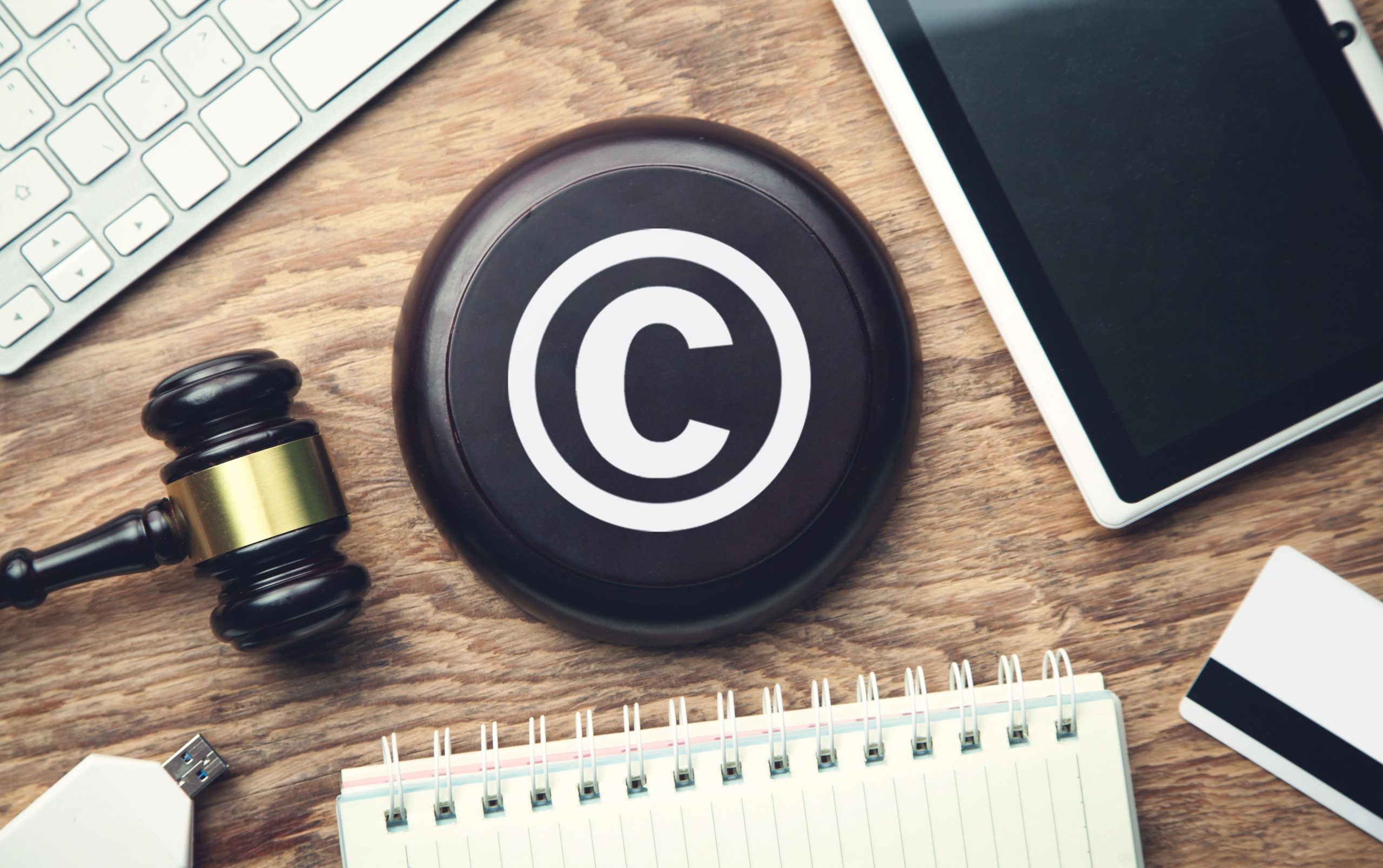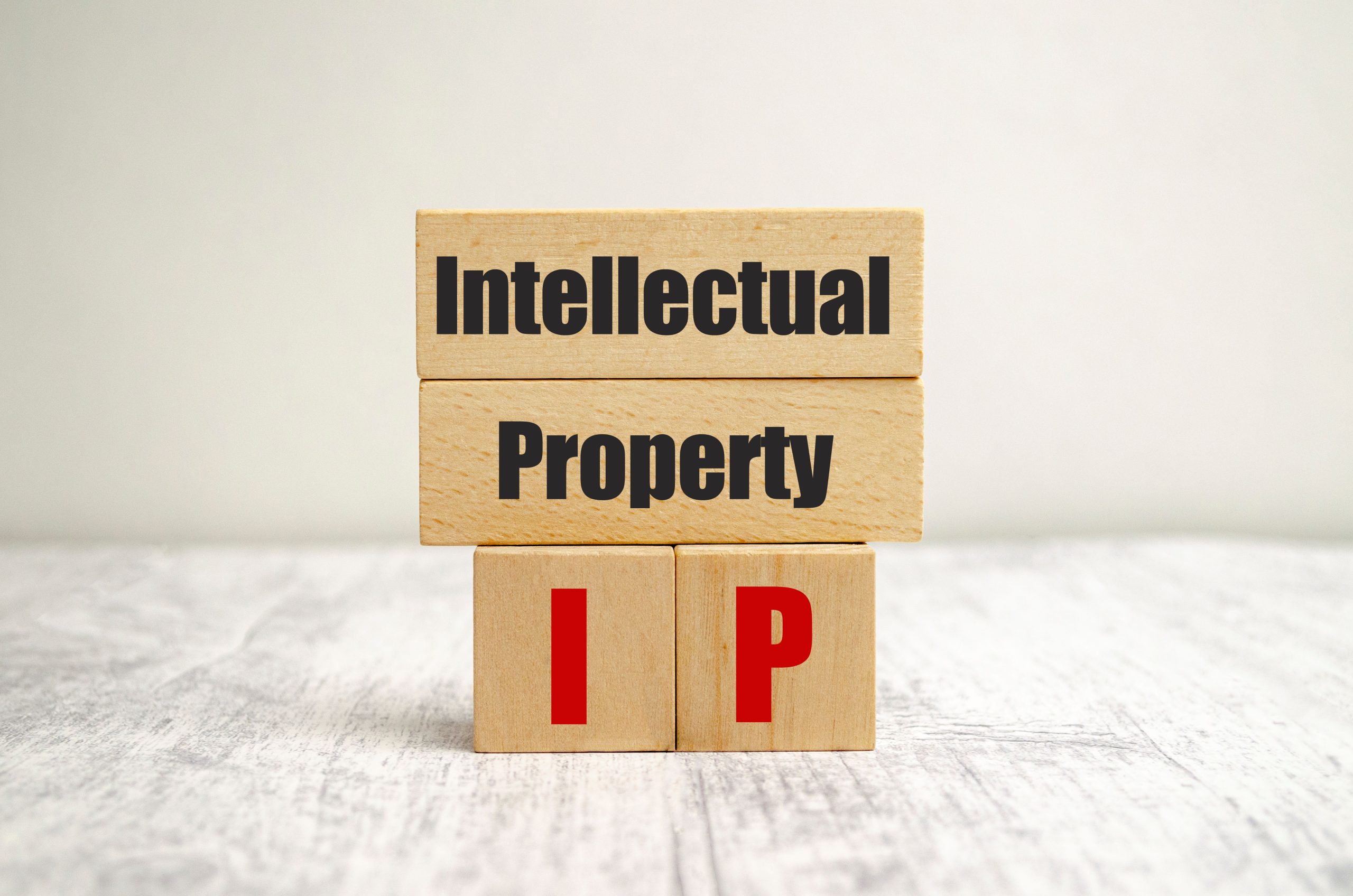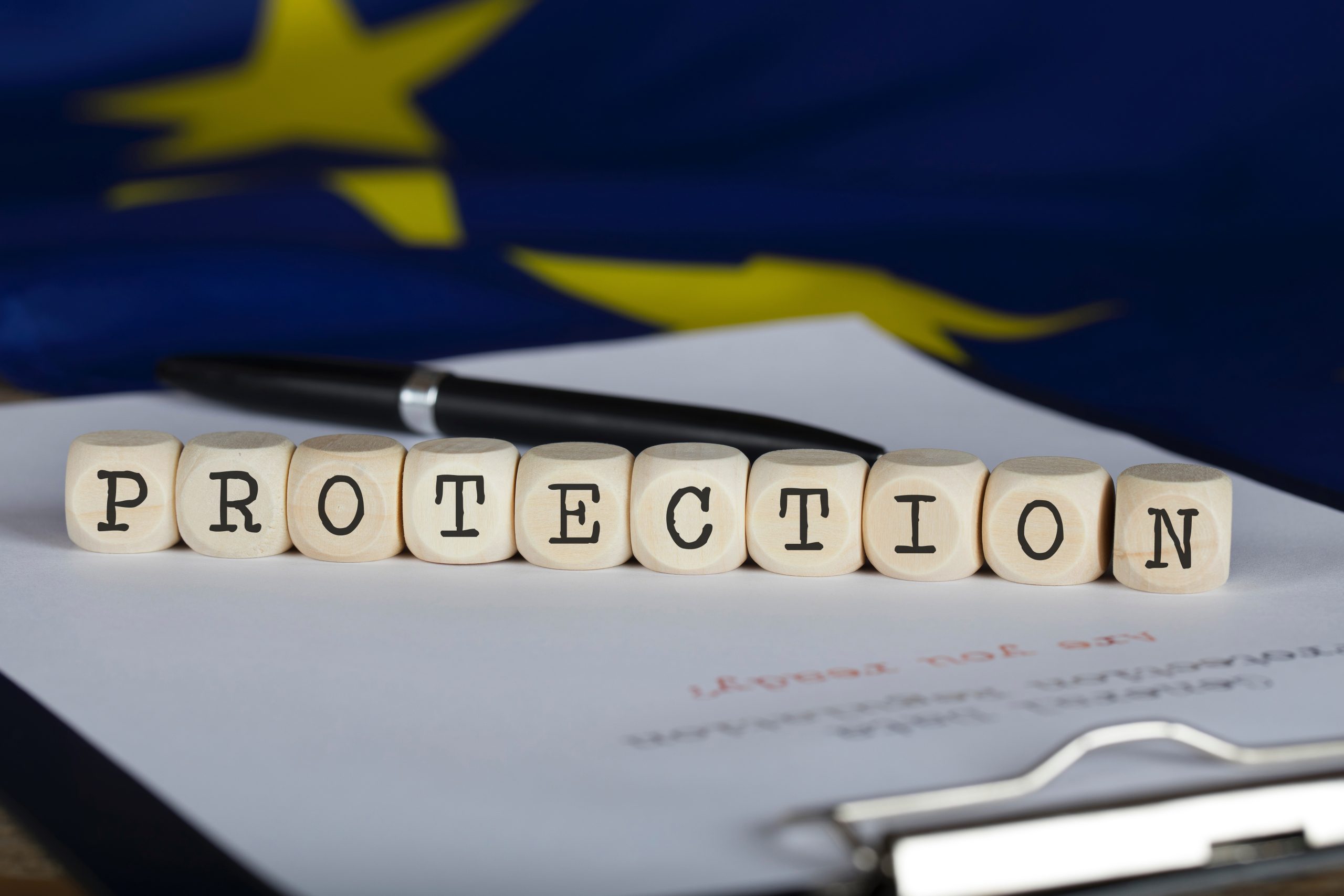In 2020, the European Union Intellectual Property Office (EUIPO) reported that companies owning intellectual property rights (IPR) generated between 29% and 32% more revenue per employee compared to those without such rights.
This striking statistic underscores the pivotal role of IP in driving business success. However, it’s not just about owning IP; it’s about protecting and managing it effectively.
Consider the case of a small European tech startup that revolutionized the market with a groundbreaking app. Despite their innovation, they faced a devastating setback when a competitor exploited their unprotected IP, resulting in significant financial losses and a prolonged legal battle.
In today’s fiercely competitive market, understanding and securing intellectual property rights is crucial for fostering innovation, safeguarding business interests, and maintaining a competitive edge.
Navigating the European legal framework is essential to protect these valuable assets effectively. This article guides how to secure and manage IP rights within Europe, ensuring that your innovations remain protected and your business continues to thrive.
Understanding Intellectual Property Rights

Definition and Types of IP
Intellectual Property (IP) refers to creations of the mind, such as inventions, literary and artistic works, designs, symbols, names, and images used in commerce. The primary types of IP include:
- Patents: Grants exclusive rights to an inventor for a fixed period, typically 20 years, allowing them to exclude others from making, using, or selling their invention without permission. Patents protect new inventions or discoveries that are useful, novel, and non-obvious.
- Trademarks: Protect brand names, logos, and symbols that distinguish goods and services. Trademarks can be renewed indefinitely as long as they are in use, providing a means for businesses to build and maintain brand identity and consumer trust.
- Copyrights: Protect original works of authorship, such as literary, musical, and artistic works, for the life of the author plus 70 years (or 50 to 70 years from publication for works by corporate authors). Copyrights grant the creator exclusive rights to reproduce, distribute, perform, display, and create derivative works.
- Trade Secrets: Include formulas, practices, processes, designs, instruments, or compilations of information that are not generally known or reasonably ascertainable. Trade secrets are protected as long as they remain confidential, offering a competitive advantage without expiration.
Importance of IP
Intellectual property plays a critical role in fostering innovation, driving business growth, and maintaining a competitive edge:
- Fostering Innovation: IP rights provide inventors and creators with the incentive to develop new products, technologies, and creative works by granting them exclusive rights and potential financial rewards. This protection encourages investment in research and development, leading to technological advancements and cultural enrichment.
- Driving Business Growth: By securing IP rights, businesses can leverage their innovations and creative works to generate revenue through licensing, sales, or partnerships. IP assets can enhance a company’s market value and attract investors, offering opportunities for expansion and increased profitability.
- Maintaining Competitive Advantage: Effective IP management allows businesses to differentiate themselves from competitors by protecting their unique products, brands, and processes. This exclusivity helps build brand loyalty, prevents unauthorized use by competitors, and provides a legal basis to challenge infringement and counterfeiting.
Understanding and managing IP rights effectively is crucial for any business aiming to thrive in today’s knowledge-driven economy.
The next sections will delve into the European legal framework for IP and provide practical guidance on securing and managing these rights.
The European IP Legal Framework

Overview of European IP Laws
The European legal framework for intellectual property is designed to provide comprehensive protection across multiple jurisdictions, ensuring that inventors, creators, and businesses can secure and enforce their rights effectively. Key treaties, regulations, and directives that shape this framework include:
- European Patent Convention (EPC): A multilateral treaty that established the European Patent Organization and provides a legal framework for granting European patents via a centralized system. Patents granted under the EPC are valid in multiple European countries.
- Regulation (EU) No 2017/1001 on the European Union Trade Mark (EUTM): Establishes a unified trademark registration system, allowing businesses to obtain trademark protection across all EU member states with a single application filed at the EUIPO.
- Directive 2001/29/EC on the Harmonization of Certain Aspects of Copyright and Related Rights in the Information Society (InfoSoc Directive): Harmonizes various aspects of copyright law across EU member states, particularly concerning digital and online use of copyrighted works.
- Directive (EU) 2016/943 on the Protection of Trade Secrets: Harmonizes the protection of trade secrets across EU member states, providing measures against unlawful acquisition, use, and disclosure of trade secrets.
- Unitary Patent System (UP): An upcoming system that will provide patent protection across most EU member states with a single unitary patent, reducing costs and simplifying the process of obtaining and maintaining patents in Europe.
Role of Key Institutions
Several key institutions play crucial roles in the administration and enforcement of IP rights in Europe:
- European Patent Office (EPO): An international organization responsible for examining and granting European patents under the EPC. The EPO provides a centralized patent application process, enabling inventors to obtain patent protection in multiple European countries through a single application.
- European Union Intellectual Property Office (EUIPO): An EU agency responsible for managing the registration of EU Business trademarks and designs. The EUIPO provides a unified registration system for trademarks and designs, offering protection across all EU member states. The office also supports enforcement efforts and promotes awareness of IP rights.
- National IP Offices: Each European country has its own national IP office that manages the registration and protection of IP rights within its jurisdiction. These offices handle applications for national patents, trademarks, and designs, provide information and support to rights holders, and enforce IP laws at the national level.
Understanding the European IP legal framework and the roles of these key institutions is essential for effectively securing and managing IP rights in Europe.
The next section will provide practical guidance on how to navigate this framework and protect your intellectual property.
Securing Intellectual Property in Europe
Patents: Process of Applying for and Securing Patents in Europe
Securing a patent in Europe involves several steps to ensure that your invention is legally protected:
- Determine Patentability: Ensure that your invention is novel, involves an inventive step, and is industrially applicable. Conduct a patent search to check for existing patents that might conflict with your invention.
- Drafting the Patent Application: Prepare a detailed description of the invention, including claims that define the scope of protection. A patent attorney can assist in drafting a robust application.
- Filing the Application: Submit your application to the European Patent Office (EPO) or a national patent office in a European country. The EPO allows for a single application to cover multiple European countries under the European Patent Convention (EPC).
- Examination Process: The EPO conducts a thorough examination of the application, including a search for prior art and an assessment of the invention’s novelty, inventive step, and industrial applicability.
- Grant of Patent: If the application meets all requirements, the EPO grants a European patent. The patent must then be validated in each designated country, which may involve translating the patent into local languages and paying validation fees.
- Maintaining the Patent: Pay annual renewal fees to keep the patent in force in each country where it is validated. Failure to pay these fees can result in the loss of patent protection.
Trademarks: Registering Trademarks with the EUIPO and National Offices
Securing trademark protection in Europe can be done through the EUIPO or national IP offices:
- Trademark Search: Conduct a search to ensure that your trademark is unique and does not conflict with existing trademarks.
- Filing an Application: Submit a trademark application to the EUIPO for a European Union Trade Mark (EUTM) or to national IP offices for country-specific trademarks. The application should include a clear representation of the trademark and a list of goods or services it will cover.
- Examination and Publication: The trademark office examines the application for compliance with legal requirements in the EU and potential conflicts with existing trademarks. If the application passes examination, it is published for opposition.
- Opposition Period: Third parties can oppose the registration of the trademark within a specified period, typically three months. If no oppositions are filed, or if they are resolved in favor of the applicant, the trademark proceeds to registration.
- Registration and Renewal: Once registered, the trademark is protected for ten years and can be renewed indefinitely in ten-year increments by paying renewal fees.
Copyrights: Protecting Creative Works Across Europe
Copyright protection in Europe is automatic and does not require formal registration. However, certain steps can help reinforce your copyright claims:
- Creation and Fixation: Ensure that your work is original and fixed in a tangible medium of expression, such as writing, recording, or digital format.
- Marking the Work: While not required, marking your work with a copyright notice (e.g., © [Year] [Author’s Name]) can serve as a reminder of your rights and deter infringement.
- Registration (Optional): Some countries offer voluntary copyright registration systems that can provide additional legal evidence of ownership and date of creation.
- Enforcement: Be prepared to enforce your copyright through legal action if necessary. This may involve sending cease-and-desist letters, negotiating settlements, or pursuing litigation.
Trade Secrets: Ensuring Confidentiality and Legal Protections
Protecting trade secrets involves both legal measures and practical steps to maintain confidentiality:
- Identify Trade Secrets: Determine which information qualifies as a trade secret, such as formulas, processes, or business strategies that provide a competitive advantage.
- Implement Confidentiality Measures: Establish internal policies and procedures to protect trade secrets, including non-disclosure agreements (NDAs) with employees, contractors, and business partners.
- Access Control: Limit access to trade secrets to only those individuals who need to know the information. Use physical and digital security measures to prevent unauthorized access.
- Employee Training: Educate employees on the importance of trade secret protection and the consequences of unauthorized disclosure.
- Legal Remedies: Be prepared to take legal action if trade secrets are misappropriated. The EU Trade Secrets Directive provides a framework for protecting trade secrets and seeking remedies for unauthorized use or disclosure.
By understanding and following these processes, businesses can effectively secure their intellectual property rights in Europe, safeguarding their innovations and competitive advantage.
Managing and Enforcing IP Rights

IP Portfolio Management: Strategies for Maintaining and Leveraging IP Assets
Effective IP portfolio management is crucial for maximizing the value and impact of your intellectual property. Here are key strategies:
- Inventory and Audit: Regularly inventory and audit your IP assets to ensure they are properly documented, protected, and aligned with your business strategy. Identify any gaps in protection and take steps to address them.
- Strategic Filing: Develop a strategic approach to filing patents, trademarks, and other IP rights. Prioritize filings that align with your business goals, target markets, and areas of competitive advantage.
- Licensing and Monetization: Explore opportunities to license your IP to third parties, generating revenue through royalties or lump-sum payments. Consider joint ventures or collaborations that leverage your IP assets.
- Maintenance and Renewal: Keep track of renewal deadlines and maintenance fees for patents, trademarks, and other IP rights. Missing these deadlines can result in the loss of protection.
- Monitoring and Enforcement: Actively monitor the market for potential infringements of your IP rights. Use online tools, IP watch services, and legal counsel to identify and address unauthorized use.
- Valuation and Reporting: Regularly assess the value of your IP portfolio and include it in financial reporting. This can enhance your company’s valuation and attract investors.
Enforcement Mechanisms: Litigation, Arbitration, and Alternative Dispute Resolution
When it comes to enforcing IP rights, several mechanisms are available:
Litigation:
- Infringement Lawsuits: File lawsuits in national courts to enforce your IP rights against infringers. European countries have specialized IP courts with expertise in handling such cases.
- Preliminary Injunctions: Seek preliminary injunctions to stop ongoing infringement quickly while the case is being decided.
Arbitration:
- Binding Resolution: Choose arbitration as an alternative to litigation for resolving IP disputes. Arbitration can be faster and more confidential than court proceedings.
- Specialized Panels: Use arbitration panels with expertise in IP law to ensure informed decision-making.
Alternative Dispute Resolution (ADR):
- Mediation: Engage in mediation to resolve disputes amicably with the help of a neutral third party. Mediation can preserve business relationships and reduce costs.
- Negotiation: Direct negotiation between parties can often resolve disputes without the need for formal proceedings.
Administrative Actions:
- Oppositions and Cancellations: Use administrative procedures at the EUIPO and national IP offices to oppose the registration of conflicting trademarks or to cancel invalid IP rights.
Cross-Border Considerations: Managing IP Rights Across Multiple European Jurisdictions
Managing IP rights across multiple European jurisdictions involves navigating complex legal landscapes and ensuring consistent protection:
- Harmonization and Differences: While the EU has harmonized many aspects of IP law, national differences still exist. Understand both EU-wide regulations and country-specific laws that may affect your IP rights.
Centralized Applications:
- European Patent Office (EPO): Use the EPO to obtain patents that are valid in multiple European countries through a single application process.
- European Union Intellectual Property Office (EUIPO): Register trademarks and designs that are protected across all EU member states with a single application.
- National Registrations: In addition to EU-wide protections, consider obtaining national registrations in countries that are key markets for your business. This can provide additional enforcement options and protection.
- Enforcement Coordination: Coordinate enforcement efforts across multiple jurisdictions. This may involve working with local legal counsel, understanding different legal procedures, and ensuring timely action to protect your rights.
- Cross-Border Litigation: Be prepared for the complexities of cross-border litigation. Understand the jurisdictional rules and enforcement mechanisms available for IP disputes that span multiple countries.
By implementing these strategies for managing and enforcing IP rights, businesses can protect their innovations, maximize the value of their IP assets, and maintain a competitive edge in the European market.
Challenges and Best Practices

Common Challenges
Infringement:
- Nature: Unauthorized use, reproduction, or distribution of protected IP by others.
- Impact: Loss of revenue, dilution of brand value, and potential damage to reputation.
- Example: A competitor manufacturing and selling a patented product without permission.
Counterfeiting:
- Nature: Production and sale of fake goods bearing trademarks or trade dress identical or similar to genuine products.
- Impact: Consumer confusion, loss of sales, and harm to brand integrity.
- Example: Fake luxury goods sold online or in markets.
Legal Complexities:
- Nature: Navigating the intricate and often differing IP laws and procedures across various jurisdictions.
- Impact: Increased legal costs, risk of non-compliance, and potential loss of IP protection.
- Example: Differences in patentability criteria or trademark registration processes across European countries.
Best Practices
Proactive Measures to Safeguard IP:
- Comprehensive IP Strategy: Develop a comprehensive IP strategy that aligns with your business goals. Identify key IP assets and prioritize their protection.
- Robust Contracts and Agreements: Use well-drafted contracts, non-disclosure agreements (NDAs), and employment agreements to protect IP. Ensure that these agreements clearly outline ownership and confidentiality obligations.
- Employee Training: Educate employees about the importance of IP protection and the company’s policies and procedures related to IP. Regular training can help prevent inadvertent disclosure or misuse of IP.
- Use of Technology: Leverage technology to monitor for potential IP infringements and counterfeit goods. Tools such as automated search algorithms and digital watermarking can help detect and deter unauthorized use.
Staying Updated with Legal Changes:
- Regular Legal Reviews: Conduct regular reviews of IP laws and regulations in the jurisdictions where you operate. Stay informed about changes that may impact your IP rights and enforcement options.
- Industry Updates: Subscribe to industry publications, join professional organizations, and attend conferences or webinars to stay updated on the latest developments in IP law and best practices.
- Engage with IP Offices: Maintain an active dialogue with relevant IP offices, such as the EUIPO and EPO, to stay informed about new guidelines, procedures, and initiatives.
Leveraging Professional Advice:
- Consult IP Attorneys: Work with experienced IP attorneys to navigate the complexities of IP law. They can provide valuable guidance on securing, managing, and enforcing your IP rights.
- Use IP Consultants: Consider hiring IP consultants to help develop and implement your IP strategy. They can offer insights on portfolio management, valuation, and monetization.
- Collaborate with Enforcement Agencies: Establish relationships with law enforcement agencies, customs officials, and other relevant bodies to aid in the enforcement of your IP rights. They can assist in identifying and stopping infringing or counterfeit goods.
By addressing common challenges and implementing these best practices, businesses can effectively safeguard their intellectual property, ensuring long-term success and competitiveness in the European market.
Key Takeaways
Intellectual property (IP) rights are crucial for fostering innovation, driving business growth, and maintaining a competitive edge in the European market. Understanding the different types of IP—patents, trademarks, copyrights, and trade secrets—is essential for effectively securing and managing these valuable assets.
The European IP legal framework, shaped by key treaties, regulations, and directives, provides comprehensive protection, while institutions like the European Patent Office (EPO) and the European Union Intellectual Property Office (EUIPO) play critical roles in the administration and enforcement of IP rights.
Securing IP in Europe involves a systematic process of applying for patents, registering trademarks, protecting copyrights, and ensuring trade secret confidentiality.
Effective IP portfolio management, coupled with robust enforcement mechanisms such as litigation, arbitration, and alternative dispute resolution, is vital for maximizing the value of IP assets. Additionally, businesses must navigate the complexities of cross-border IP management, considering both harmonized EU regulations and national laws.
Common challenges, including infringement, counterfeiting, and legal complexities, necessitate proactive measures such as developing comprehensive IP strategies, staying updated with legal changes, and leveraging professional advice. By addressing these challenges and implementing best practices, businesses can safeguard their innovations and maintain their competitive advantage.
As the landscape of intellectual property continues to evolve, businesses must take proactive steps to secure and manage their IP effectively. Begin by conducting a thorough audit of your IP assets, identifying key areas for protection, and developing a strategic approach to IP management. Regularly review and update your IP portfolio, ensuring compliance with legal requirements and staying informed about changes in IP laws.
Engage with experienced IP attorneys and consultants to navigate the complexities of IP law and maximize the value of your IP assets. Invest in employee training and robust contractual agreements to protect your IP internally and externally. By taking these proactive measures, your business can safeguard its innovations, enhance its market position, and drive long-term success in the competitive European market.
Protect your intellectual property today and secure the future of your business.






